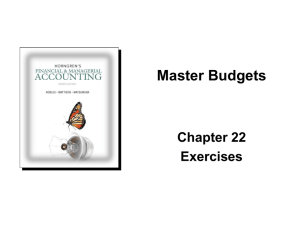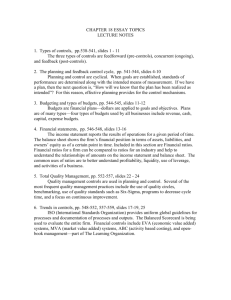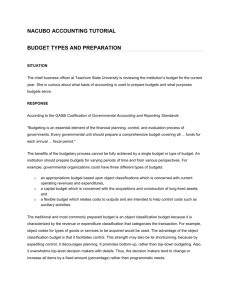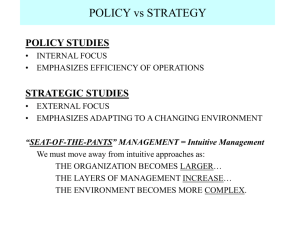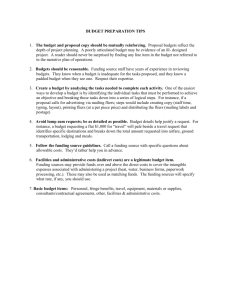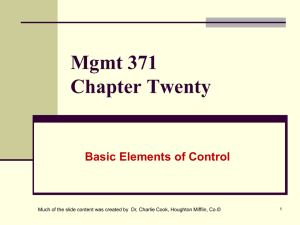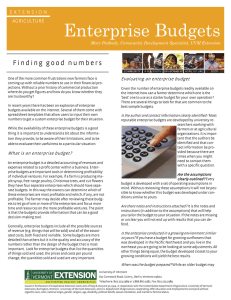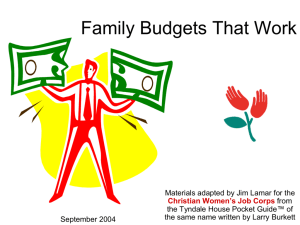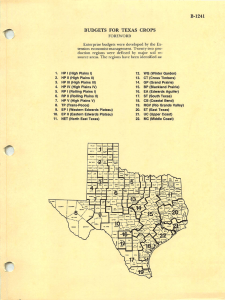Improving Student Learning When Budgets are Tight
advertisement
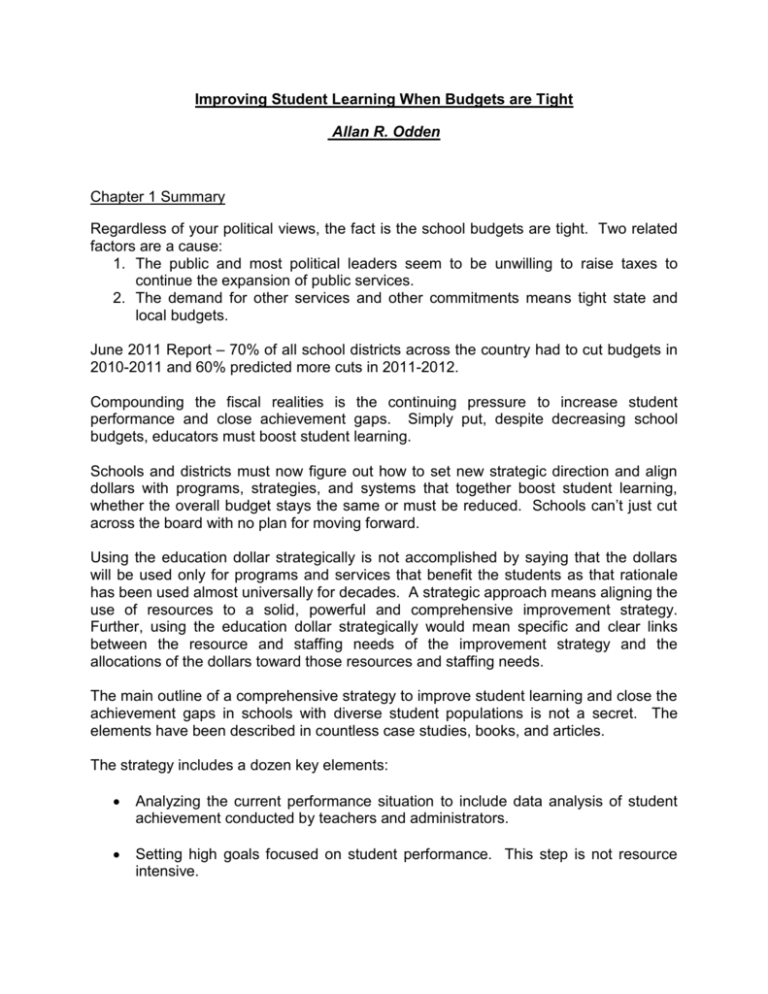
Improving Student Learning When Budgets are Tight Allan R. Odden Chapter 1 Summary Regardless of your political views, the fact is the school budgets are tight. Two related factors are a cause: 1. The public and most political leaders seem to be unwilling to raise taxes to continue the expansion of public services. 2. The demand for other services and other commitments means tight state and local budgets. June 2011 Report – 70% of all school districts across the country had to cut budgets in 2010-2011 and 60% predicted more cuts in 2011-2012. Compounding the fiscal realities is the continuing pressure to increase student performance and close achievement gaps. Simply put, despite decreasing school budgets, educators must boost student learning. Schools and districts must now figure out how to set new strategic direction and align dollars with programs, strategies, and systems that together boost student learning, whether the overall budget stays the same or must be reduced. Schools can’t just cut across the board with no plan for moving forward. Using the education dollar strategically is not accomplished by saying that the dollars will be used only for programs and services that benefit the students as that rationale has been used almost universally for decades. A strategic approach means aligning the use of resources to a solid, powerful and comprehensive improvement strategy. Further, using the education dollar strategically would mean specific and clear links between the resource and staffing needs of the improvement strategy and the allocations of the dollars toward those resources and staffing needs. The main outline of a comprehensive strategy to improve student learning and close the achievement gaps in schools with diverse student populations is not a secret. The elements have been described in countless case studies, books, and articles. The strategy includes a dozen key elements: Analyzing the current performance situation to include data analysis of student achievement conducted by teachers and administrators. Setting high goals focused on student performance. This step is not resource intensive. Changing curriculum and defining effective instructional practices to achieve a more rigorous guaranteed and viable curriculum. Being strategic about reviewing the financial implications of how schools are organized. Implementing less expensive ways to schedule students for instruction that will not negatively impact student achievement. Using a wide variety student performance data to improve instruction Organizing teacher work in different ways to positively impact student performance. Implementing a systemic approach (PLCs) to change the culture in order to achieve a more uniform deployment of effective instructional practice into all classrooms. Investing in ongoing, comprehensive, and intensive professional learning. Embedding professional learning into the school day. Utilizing an instructional coaching model to increase teacher effectiveness. A recent randomized trial study of coaching found significant, positive impact on student achievement in all core subjects. Developing an understanding among all stakeholders that professional learning cannot be viewed as a once and done element. Providing struggling students with extra help to meet rigorous performance standards. This requires substantial resources. Distributing leadership across all levels and all roles. Creating a density of leadership (many leaders) and dispersion of leadership (leaders at all levels) within the system. Creating a professional culture with high expectations for the learning of all students. Keeping abreast of ongoing education research continuously searching for the best practices. Taking teacher and administrator talent seriously. Effective teachers and administrators are needed to successfully implement the strategy. Embracing a performance culture of accountability for the student achievement results.

